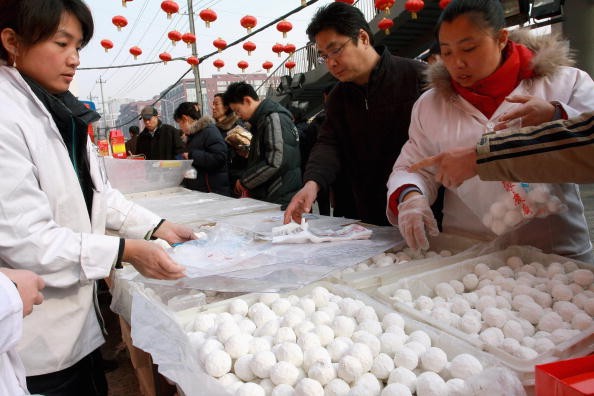China's glutinous rice ball has become a symbol of unity among Chinese as being possibly the only common food served on the dining tables throughout the country during the Lantern Festival celebration.
While many customs during the Lantern Festival have changed over the years, the partaking of the glutinous rice ball during the first full-moon night of a lunar year is still very popular. Furthermore, the taste of this delicacy has remained unchanged throughout its over than 2,000 years of history.
In China, the cuisines from north and south are distinguished by weather and the people there prepare their food.
The northern version is called yuanxiao and is like a dumpling with salty fillings that include minced meat and vegetables. Yuanxiao is prepared by placing balls of filling into a basket of glutinous rice flour. The basket is then shaken so the flour becomes a coating while water is sprinkled.
On the other hand, the southern variety called tangyuan is cooked by boiling the balls of rice flour dough with the sweet filling already inserted inside. The filling is made of such ingredients as sugar, sweet bean paste, sesame, sweetened tangerine peel and osmanthus flowers.
The size of glutinous rice balls range from between that of a quail's egg to ping-pong ball size, and are relatively easy to make, with the southern variations typically larger.
They can be either filled or unfilled and are consumed year-round rather than simply a festival food. It is also served as a dessert on Chinese wedding day, Winter Solstice Festival, and other important occasions like a family reunion.
The traditional filling for yuanxiao or tangyuan is made from sesame, peanuts, sugar and animal fat.
Sesame was brought to China from Central Asia during the Han Dynasty (202 B.C.-220 B.B.), and peanut was transported to the country from the Philippines during the Ming Dynasty (1368-1644).
The Lantern Festival, held on the 15th day of the first month of a lunar year, is named after yuanxiao.



























